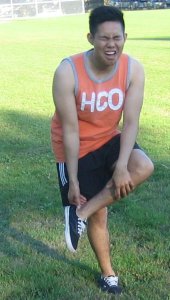Peroneal tendonitis is an inflammatory change that occurs in the peroneal tendons. Tendons are connecting points between the bones and muscles. Peroneal tendonitis is a condition of the foot and ankle caused by repeated stress and a high force that is exerted on the tendons. It usually affects people who are playing volleyball, football, skiing and running on uneven surface. Inflammation in these areas can take weeks or months to heal since tendons heal slowly. Rest and stretching are important strategies to promote the healing process.
Causes of peroneal tendonitis
- The peroneal muscle found at the back of the lower leg has a tendon which is found behind the lateral malleolus on the outside of the ankle. Overuse causes the peroneal tendon to rub on the bone and become inflamed.
- Runners who are running along slopes can cause excessive aversion or rolling out of the foot that is prone to develop peroneal tendonitis.
- Tight calf muscle increases the tension in the peroneal tendon and causing it to rub more
- A hurried training program and wearing improper shoes for long durations can cause peroneal tendonitis.
- Lack of proper warm up exercises, tightness of the muscle, incorrect running techniques, overexerting sessions of training and ankle joint
Symptoms of peroneal tendonitis
- There is pain and swelling on the outer part of the ankle below the bony part and the outer foot.
- The pain becomes worse with activities such as walking or running on uneven surface and minimized after taking a rest.
- The pain caused by peroneal tendonitis is gradual and progressive. It worsens when performing activities for a long period of time and can be felt at the back and the lateral sides of the ankles when exerting finger or thumb pressure.
- There is difficulty in twisting the foot inwards caused by the pain as it stretches the peroneal muscle and the tendon.
Treatment

- Rest and avoid any activities which can worsen the condition, but swimming helps in stretching the muscles without putting excess strain on the muscles.
- Apply an ice pack on the affected area. You can use an ice bag that is wrapped in a towel and place it over the outer side of the ankle area at least 10 minutes for 2-3 times a day for a few days.
- Take prescribed anti-inflammatory medications in order to minimize pain and inflammation.
- Keep the foot elevated above the level of the heart during sleep or when resting.
- Wear proper shoes which are suited for the activities being engaged in.
- Regular stretching of peroneal calf muscle is important. If they are tight and rigid, it produces more friction between the tendon and the bone which delays the healing of the affected area.
- Deep tissue massage and acupressure can be performed in order to help minimize the tension in the peroneal tendon and the peroneal calf muscles are relaxed.
- Once the pain and swelling is reduced, he/she can return to the normal activities gradually and slowly. A sudden increase in the level of activity can cause interruption of the healing process.
